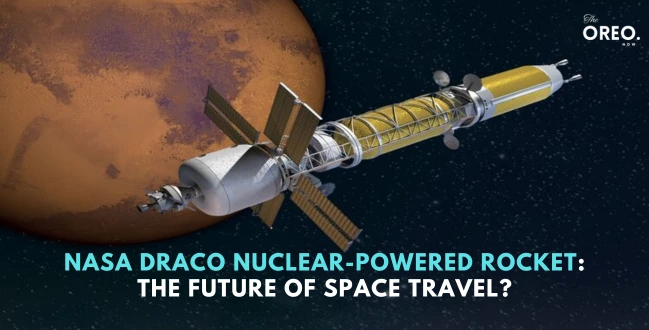Can Aircraft Fly Themselves?
Gear up and get ready for the upcoming voyage as the future of flying is rapidly drawing near. Imagine a world where airplanes fly smoothly in the sky, doing amazing tricks without a pilot. Yes, what you just read is true. Picture a world where aircraft gracefully glide through the sky, effortlessly performing incredible maneuvers without human control.
Accompany us on an adventure as we delve into the captivating narrative of achieving greatness through independence. As startups pave the path toward progress, regulators take on the role of safeguarding, and individuals grapple with the thrill of the unknown. Prepare yourself, readers, as this captivating voyage is not something you should overlook.
The latest update on aircraft self-fly
Advancements in technology are evident as the latest updates reveal airplanes’ ability to fly on their own. Scientists are doing lots of careful testing to make sure that planes can fly on their own soon. The development of new technologies has improved capabilities for obstacle detection and avoidance, increased accuracy in decision-making approaches, and enhanced synergy between humans and AI.
Overall, these advancements are important in terms of technical progress. Although there are still regulatory obstacles, industry, and aviation authorities are working together in a proactive manner to develop strong certification and safety guidelines.
The aim is to progressively and efficiently merge self-governing systems while guaranteeing comprehensive information for everyone. Concurrently, endeavors are underway to foster trust among the public through openness and providing relevant information. These endeavors indicate the feasibility and probability of airplanes being capable of flying with reduced human intervention in the years to come.
Autonomy Redefining Aviation: Startups at the Helm
In this aviation revolution, startups such as Wisk Aero are taking the lead. Boeing, a big company in the aerospace industry, is paying attention to Wisk Aero. Boeing-owned Wisk Aero is at the forefront of developing pilotless air taxis for short-haul passenger flights. This bold project shows the impressive advancements happening in self-flying technology.
Concurrently, Skyryse, an innovative startup, aims to streamline flight management by leveraging its specialized software. The purpose of Skyryse is to provide support to pilots in navigating small planes and helicopters. It facilitates a smoother and more comprehensible flying process, catering even to novices in the field.
Turning Ideas into Reality: Building and Trying Out Initial Versions
Companies worldwide are working hard in their labs, carefully refining models and conducting thorough tests to make sure that self-flying systems are practical and safe. These groundbreaking endeavors surpass mere technological advancements and signify a substantial shift in our perception of aviation.
However, as these initial models improve and move closer to being fully operational, they will need to be thoroughly examined by government regulators. During the certification process, there will be an evaluation of the safety of autonomous flight systems and their potential implications for air traffic control.

Making the air safe: Authorities and people agreeing
As the airplane industry explores the new concept of autonomous flight, the people in charge of making rules must carefully consider and approve these new technologies. The officials’ decision will significantly influence the acceptance and utilization of self-flying planes within the aviation sector. Safety will be the main focus when regulators discuss whether it’s possible to have planes without pilots.
Their aim is to validate the feasibility of pilotless flights by anchoring them in pragmatic and attainable concepts.
The task of securing public approval is of equivalent significance. As these new ideas and inventions become more real and noticeable, it is important to tell and reassure the public about the safety precautions being taken. In order to earn the confidence and backing of the public for autonomous air travel, addressing concerns, rectifying misconceptions, and facilitating comprehension of safety protocols are crucial.
Taking Flight: A Personal Perspective
The Washington Post went on a journey to understand the core of this new era of autonomous flying, instead of just guessing about it. During my visit to California, I had the privilege to observe firsthand the major developments occurring at the main headquarters of Wisk and Skyryse. Lee Powell, the journalist, surprised everyone with his actions during the experience.
He briefly pursued a career as a pilot and found immense pleasure in the distinct encounter of soaring through the skies alone. This story explained how these companies are changing aviation, making it harder to tell the difference between pilots and machines.
“The Continuing Story: A Look into the Future”
The aviation industry is moving quickly towards a future that used to only exist in stories. This brings both chances and difficulties. The story of autonomous flight is still happening, combining advanced technology, careful examination by rules and regulations, and acceptance by society. The cooperation between fresh and experienced businesses is leading us into an uncharted era where our perception of flying is being transformed.
At this time, planes that use advanced technology to fly on their own will push the limits of what we can imagine and achieve. The aircraft that possess nearly autonomous flight capabilities showcase remarkable technology and exemplify humanity’s constant drive for innovation and advancement, propelling us to reach the skies.
Must Read: “Tata Airlines: A $1.8 Billion Loss Story”



